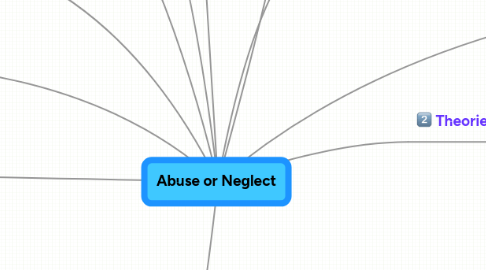
1. Rape-an act of aggression, not passion against another.
1.1. Types
1.1.1. Date
1.1.2. Marital
1.1.3. Statutory
1.2. Victimizer
1.2.1. Mother is “seductive but rejecting” toward child.
1.2.2. Mother's dominance over son continues into adult life.
2. Father domineering, impulsive, & physically abusive.
3. Victim
3.1. Mother passive,submissive & denigrates her role of wife/mother. Unaware of, or at least suspects, incestuous relationship but uses denial or keeps quiet out of fear of being abused by husband.
3.2. For “stranger rape,” victims chose b/c right place/right time, not b/c or appearance or behavior.
3.3. Presence of weapon (real or not) is principal measure of the degree to which a woman resists attacker.
3.4. Victim responses
3.4.1. Expressed response pattern
3.4.2. Controlled response pattern
3.4.3. Compounded rape reaction
3.4.4. Silent rape reaction
4. Incest
4.1. An impaired spousal relationship
5. Sexual assault
6. Child abuse
6.1. Physical abuse:
6.1.1. Examples??
6.2. Emotional abuse:
6.2.1. Results in serious impairment of the child’s social, emotional, or intellectual functioning
6.3. Neglect
6.3.1. Physical
6.3.2. Emotional
6.4. Sexual
6.4.1. Exploitation
6.5. Characteristics of the abuser
6.5.1. Abused previously
6.5.2. Lack of support
6.5.3. Stress
6.5.4. Lack of understanding of child development
6.5.5. Lack of adaptive coping strategies
6.5.6. Expects the child to be perfect
7. Assessment
7.1. Intimate partner abuse
7.1.1. Profile of the victim
7.1.1.1. 85% are women.
7.1.1.2. Battering - a pattern of coercive control founded on & supported by physical &/or sexual violence or threat of violence of intimate partner.
7.1.1.3. All age, racial, religious, cultural, educational, and socioeconomic groups. They often have low self-esteem.
7.1.1.4. Abusive childhood
7.1.1.5. Inadequate support systems.
7.1.2. Profile of the victimizer
7.1.2.1. Men with low self-esteem, pathologically jealous, presenting a “dual personality,” & exhibiting limited coping ability &severe stress reactions.
7.1.2.2. The spouse is viewed as a personal possession.
7.1.3. The cycle of battering
7.1.3.1. Phase I, tension-building phase
7.1.3.2. Phase II, acute battering incident
7.1.3.3. Phase III, calm, loving, respite (honeymoon) phase
7.1.4. Why does she stay?
7.1.4.1. Fear for life or children's lives
7.1.4.2. Lack of support network for leaving
7.1.4.3. Religious beliefs
7.1.4.4. Lack of finances
8. Nursing diagnoses
8.1. Rape-trauma syndrome
8.2. Powerlessness
8.3. Delayed growth and development
8.4. Nursing intervention
8.4.1. Safety
9. Aggression & violence supply the individual with power & prestige that boosts self-image.
10. Theories
10.1. Psychodynamic theory
10.1.1. Unmet needs for satisfaction & security result in an underdeveloped ego & a poor self-concept.
10.2. Learning theory
10.2.1. Children learn to behave by imitating role models as abuse children.
10.3. Sociocultural theories
10.3.1. Societal influences
10.3.1.1. Aggressive behavior is primarily a product of one’s culture and social structure. The American culture was founded on a general acceptance of violence as a means of solving problems.
10.3.1.2. Individuals feel needs & desires not met relative to other people.
11. History of Abuse
11.1. Puritans - property
11.2. Biblical perspective
11.2.1. Subservient
11.2.2. Spare the rod
